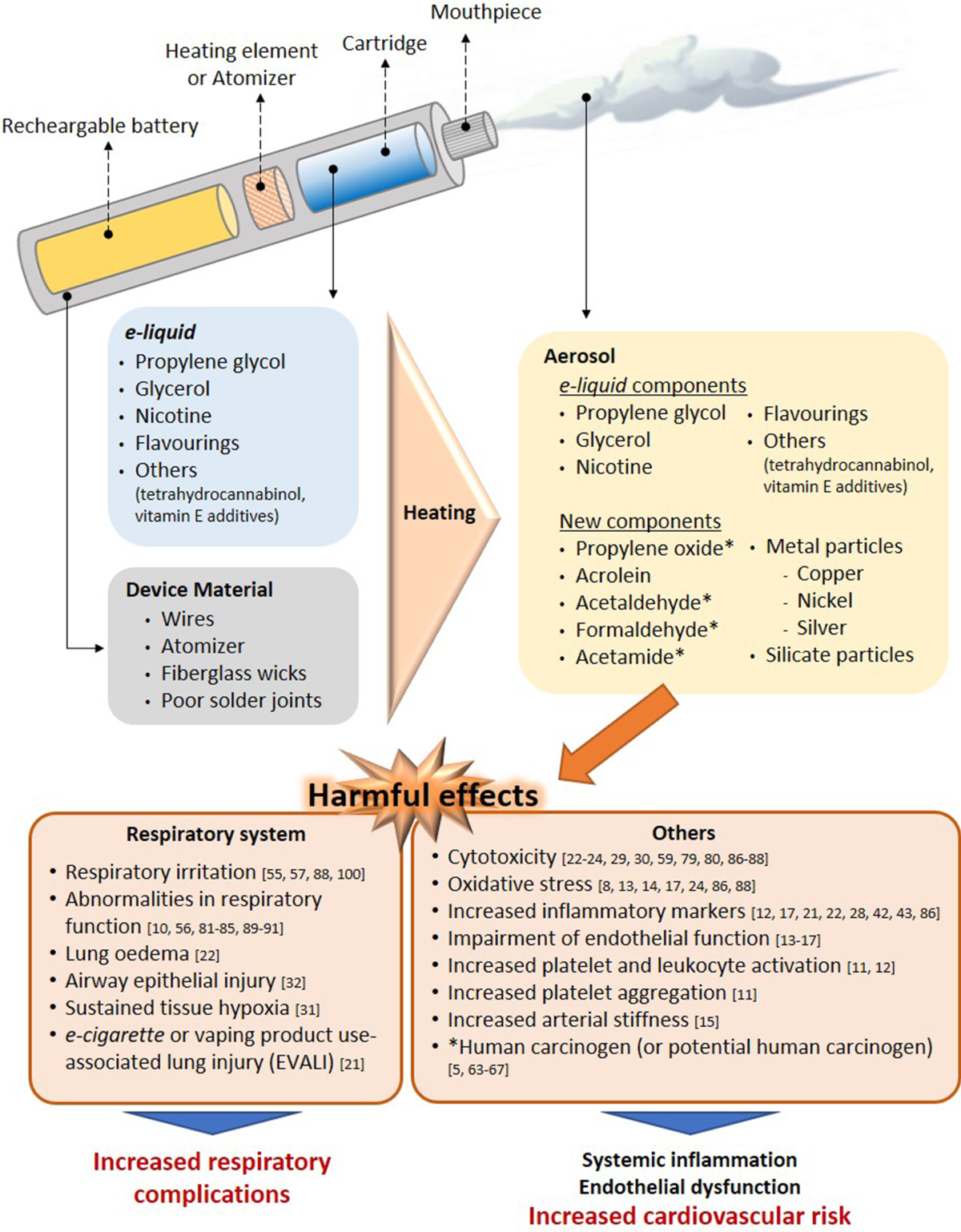Electronic cigarettes, while sometimes perceived as a less harmful alternative to combustible tobacco, carry significant disadvantages and health risks.
Health Risks Associated with Vaping
- Nicotine Addiction: Most e-cigarettes deliver nicotine, a highly addictive substance. This can lead to physical dependence, withdrawal symptoms upon cessation, and sustained use. For adolescents and young adults, nicotine exposure can adversely affect brain development, impacting areas responsible for attention, learning, mood, and impulse control.
- Lung Damage: The aerosol produced by e-cigarettes is not merely water vapor. It contains various potentially harmful substances, including volatile organic compounds, ultrafine particles, carcinogens (such as formaldehyde and acetaldehyde), and heavy metals like nickel, tin, and lead. Inhalation of these substances can cause lung inflammation, irritation, and may contribute to chronic lung diseases.
- Cardiovascular Impact: Nicotine is a stimulant that increases heart rate and blood pressure. Chronic exposure can contribute to arterial stiffness and an elevated risk of cardiovascular events, such as heart attacks and strokes. Other components in e-cigarette aerosol may also negatively affect heart health.
- Unknown Long-Term Effects: As e-cigarettes are a relatively recent product category, the full spectrum of their long-term health consequences is not yet fully understood. Comprehensive, long-duration studies are still ongoing to determine chronic health outcomes.
Other Significant Disadvantages
- Risks to Specific Populations: E-cigarette use during pregnancy is unsafe, as nicotine and other chemicals can harm fetal development. Youth are particularly vulnerable to addiction and the neurotoxic effects of nicotine.
- EVALI (E-cigarette or Vaping Product Use-Associated Lung Injury): Acute and severe lung injuries have been reported among e-cigarette users. While strongly linked to vitamin E acetate in THC-containing vaping products, the risk profile for all types of e-cigarette products requires caution.
- Potential Gateway to Combustible Tobacco: For some non-smokers, particularly youth, initiating e-cigarette use may increase the likelihood of transitioning to traditional cigarettes.
- Device Malfunctions: There have been documented cases of e-cigarette batteries overheating, catching fire, or exploding, leading to serious injuries and burns. These incidents are often related to improper charging, device modification, or manufacturing defects.
- Accidental Poisoning: E-liquids, which contain concentrated nicotine, are toxic if ingested or absorbed through the skin. This poses a significant poisoning risk, especially to young children and pets if containers are not properly secured.
- Secondhand Aerosol Exposure: Bystanders can be exposed to nicotine and other potentially harmful chemicals present in the aerosol exhaled by e-cigarette users, although generally at lower levels than secondhand smoke from combustible cigarettes.
These disadvantages highlight that e-cigarette use is not without considerable risks. Understanding these potential harms is crucial for informed decision-making regarding their use.










